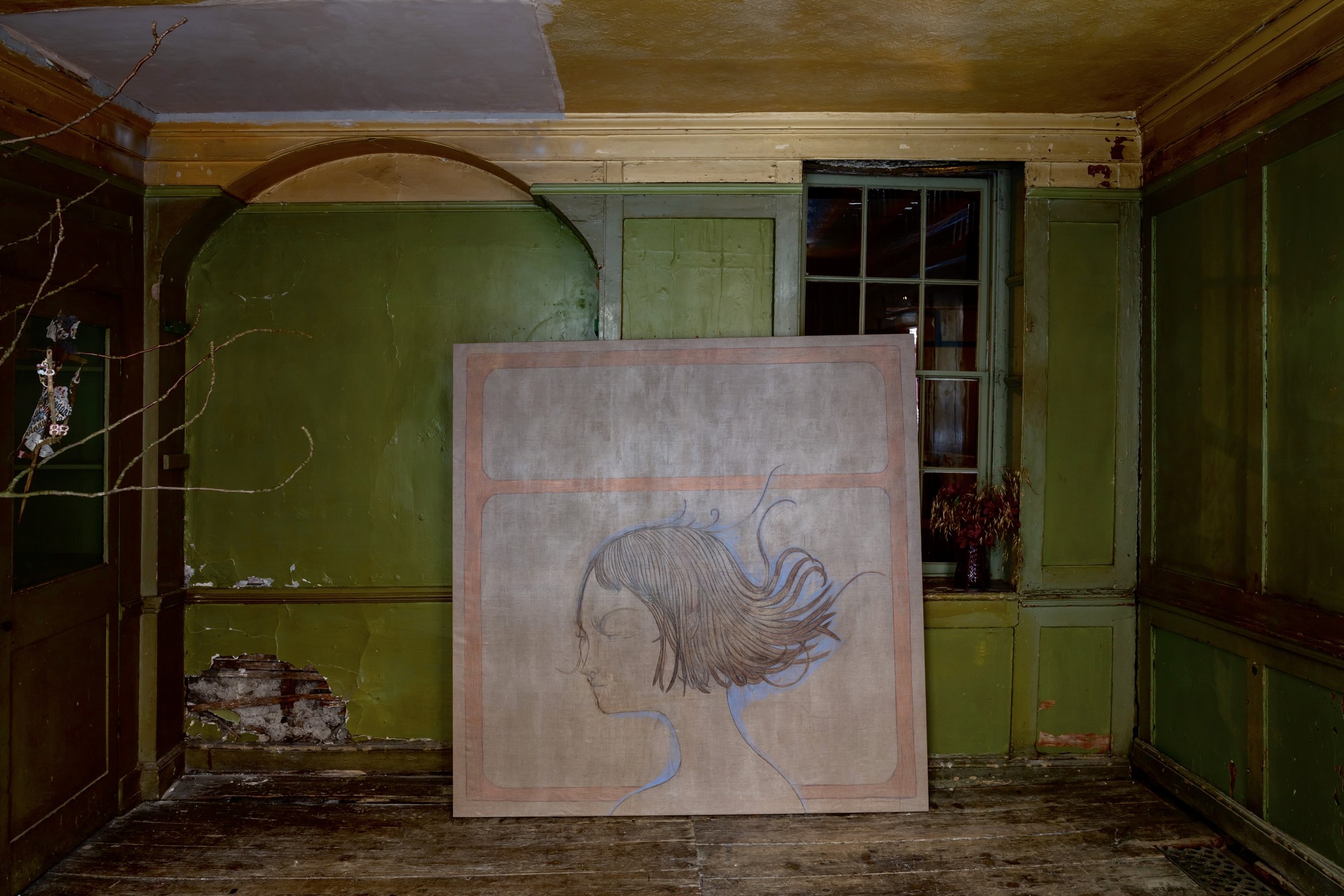E N T R O P Y
Curated by Raja Umar Jamalullail and Hugo Alcantara
28 May 2024 - 6 June 2024
11 am - 6 pm daily
4 Princelet St, E1 6QH London, United Kingdom.
Miriam Cahn • Lee Lozano • Thomas Schütte • Tenki Hiramatsu • Chase Wilson • Anton Munar • Hotaru Tachi • Mimi Lauter • Isabelle Albuquerque • Paul Becker •
Entropy serves as a bridge in the artistic dialogue between antiquities and contemporary art, a concept that unites through contrast. Antiquities bear the weight of entropy, their erosion and wear a testament to history’s embrace. Contemporary art, meanwhile, often deliberately incorporates entropic elements, challenging the notion of permanence. Through ancient Asian sculpture and the works of Miriam Cahn, Lee Lozano, Thomas Schütte, Tenki Hiramatsu, Chase Wilson, Anton Munar, Hotaru Tachi, Mimi Lauter, Isabelle Albuquerque and Paul Becker, we explore the interplay reflecting the cycle of life and decay, creation and disintegration, where the old gives way to the new, and the new eventually becomes the old. Entropy, therefore, is not just a scientific principle but a philosophical muse, inspiring artists across eras to reflect on the transient nature of existence.

1. Hotaru Tachi 面(つら), 2024 (Oil on canvas, wood), 38.6 cm x 33.3 cm x 2.8 cm. 2. A pair of gilt wood Fu Dog temple figures. Edo Japan, late 18th century CE.

1. A wooden figure of Ptah Sokar Osiris. Egypt, 664-332 BC. 2. Anton Munar. Untitled, 2024 (oil and collage on wood), 25.5 cm x 22.1 cm.

Paul Becker, Boy, 2024 (coloured pencil on linen).

Miriam Cahn. denkender soldat, 5.1.19; 2019 (Oil on canvas mounted on cardboard. 29.6 cm x 21.1 cm).

1. Anton Munar. Untitled, 2024 (Oil on wood in artist textile frame), 27.1 cm x 37.2 cm x 2.4 cm. 2. Late Edo period wooden figure of Fudo Myo with two attendants. Japan, 19th century CE.

Anton Munar. Untitled, 2023 (Oil on wooden drawer), 24.3 cm x 11.2 cm x 7.5 cm.

1. Lee Lozano. Untitled, 1964. Pencil and coloured pencil on paper.

1. Tenki Hiramatsu. Warm Air, 2024 (Oil on canvas mounted on panel), 60 cm x 80 cm. 2. A Gandharan schist figure of a bodhisattva. Afghanistan/Pakistan, 100-400 AD.

1. Lee Lozano. Untitled, 1964 (pencil and coloured pencil on paper). 2. A sandstone figure of a female attendant. India, 10th-12th century CE.

Sofya Shpurova. Untitled, 2023. Oil on canvas. 121 cm x 91 cm.

Anton Munar. Untitled, 2024 (oil and collage on wood). 25.5 cm x 22.1 cm


Hotaru Tachi. 転がる岩、君に朝が降 る, 2024 (Oil and water-based paint and charcoal on linen, wood), 41.2 cm x 37.5 cm x 3.1 cm.

Louis Fratino, Self portrait with palette, 2018 (watercolour on paper), 30.5 cm x23 cm.

A Gandharan grey schist relief panel depicting two putti supporting a leafy garland weighed down by a fruit. North-Western Pakistan, 300-400 C.E.

A pink sandstone carving of Jain Goddess Vidyādevī surrounded by her attendants. Her elaborate and majestic headdress as well as jewellery clearly denote her divine status. Rajasthan, India, 11th century CE.

A Gandharan schist frieze depicting a couple. Pakistan/ Afghanistan, 200-300 C.E.

A carved wooden head of Garuda. India, 18th-19th century AD.

A pink sandstone temple fragment depicting dancing apsara richly draped in fine beaded jewellery. India, 10th-12th century CE.

A large and fine yellow sandstone figure of a four-armed crowned Vishnu. India, 10th-12th century AD.

1. Isabelle Albuquerque. The Golden Calf, 2022 (human hair, resin, Ebony gaboon). 25.4 cm x 68.6 cm x 8.6 cm. 2. Shadow puppets. Malaysia, 19th-20th century CE).

Anton Munar. Untitled, 2023 (Oil on wooden drawer. 24.3 cm x 11.2 cm x 7.5 cm.
